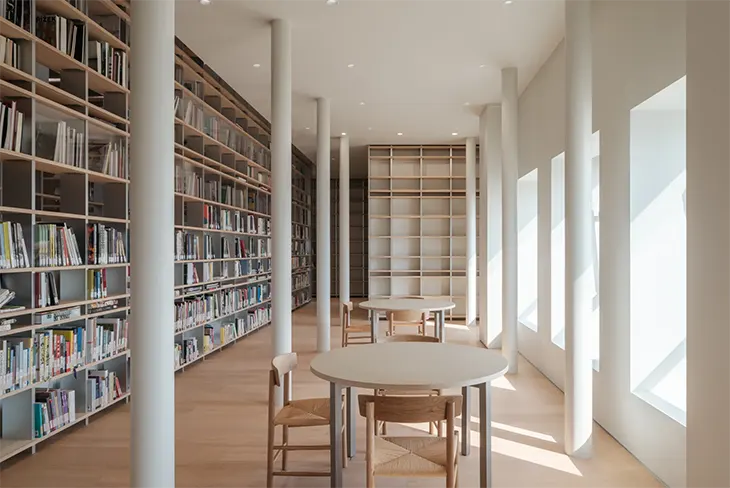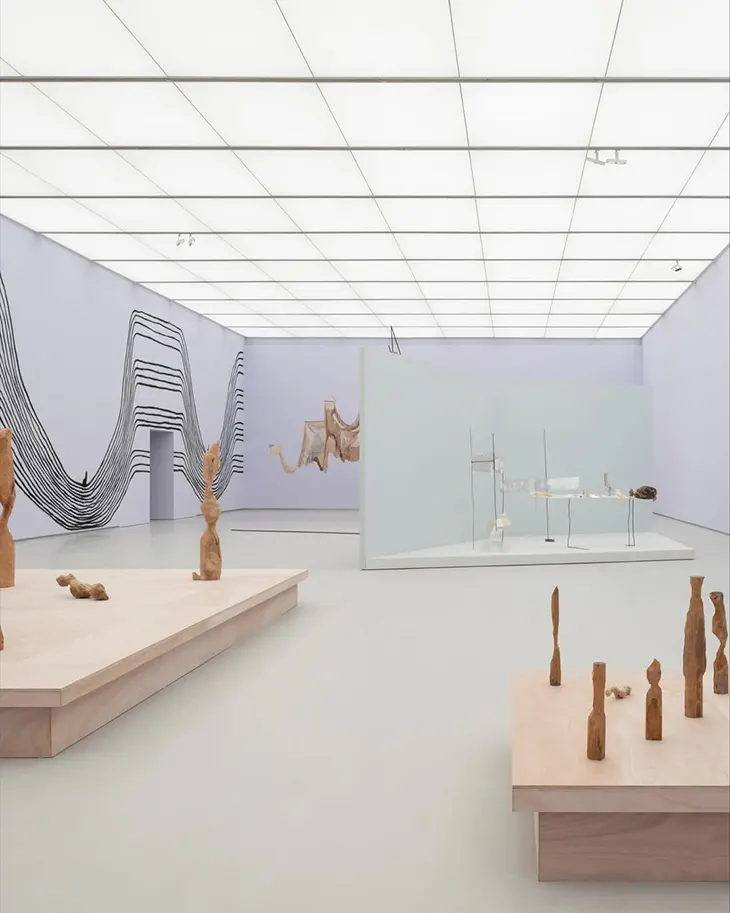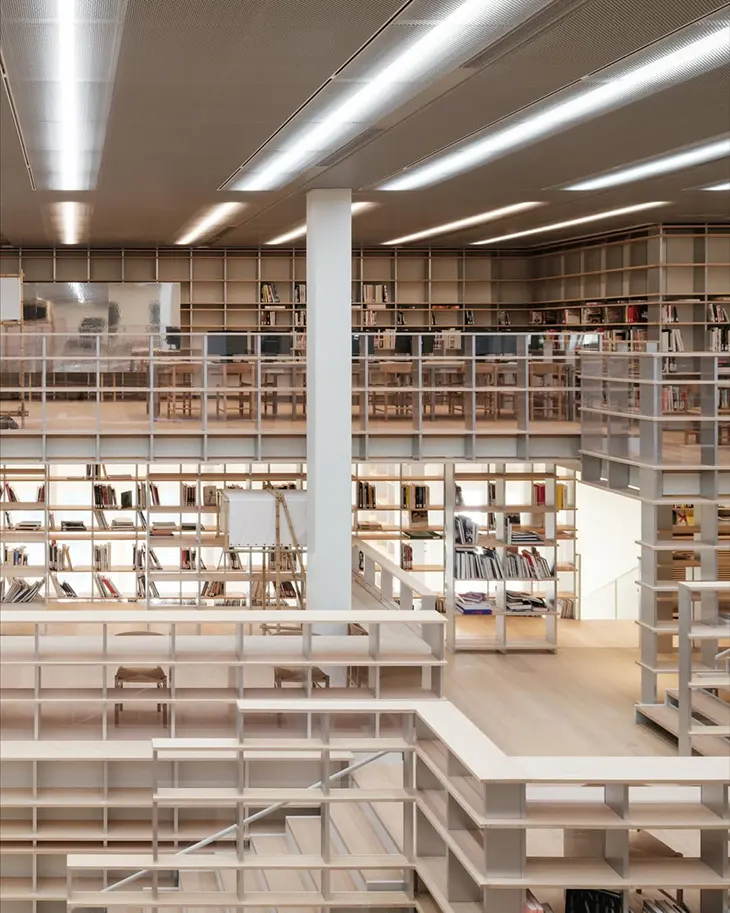
Chanel has introduced Espace Gabrielle Chanel, mainland China’s first public library dedicated to contemporary art. The space occupies the entire third floor of Shanghai’s Power Station of Art (PSA), transforming 18,000 square feet into a major new resource for research, reading, and cultural exploration. With more than 50,000 books and audio editions, the library positions itself as one of the most ambitious art-focused archives currently accessible to the public in China.
The design comes from Japanese architect Kazunari Sakamoto, who worked with the museum to shape a structure that fits the scale of the former electric plant. He created a horizontal layout of ramps and shelves, forming a continuous sequence that guides visitors through what he describes as a “valley of books.” The design references the Huangpu River outside the museum, using shifts in elevation and long, open lines to bring a sense of flow to the industrial space.

Since opening in the converted factory, the museum has expanded its program to include contemporary art, design, theater, and architecture. With Chanel’s support, PSA now adds a theater, a design center, an upgraded exhibition hall, and a terrace overlooking the river.
Espace Gabrielle Chanel is also the first major initiative by Chanel’s Culture Fund in Asia. The Fund’s partnership with PSA began in 2021 through the Next Cultural Producer program, which supports emerging voices in Chinese craft, theater, and architecture. Chanel’s global head of arts and culture, Yana Peel, described the new library as an extension of that mission, emphasizing the brand’s focus on partnerships with institutions rather than creating fully independent spaces. Chanel currently works with fifty museums and cultural organizations worldwide, including the Leeum Museum of Art in Seoul, MCA Chicago, Centre Pompidou in Paris, and London’s National Portrait Gallery.

Peel characterizes Espace Gabrielle Chanel as a project shaped by long-term thinking. She sees the library as a resource for future cultural producers, readers, and researchers across China, and as a platform for new forms of artistic exchange. The collection includes publications from Asian museums, galleries, and cultural centers, as well as a section dedicated to Coco Chanel. Ten years in development, the library integrates e-books alongside physical materials, reflecting the rapid improvements in China’s digital research infrastructure over the past decade.
PSA director Gong Yan views the library as an essential addition to the museum’s educational work. She notes that the archive will support contemporary art, design, architecture, social sciences, literature, and craft while giving the museum space to present its own research findings. For Gong, the project also addresses a long-standing gap in China’s contemporary art field, helping to strengthen connections with global discourse. She emphasizes that the space aims to serve both professionals and the wider public, treating art as a public resource rather than a closed academic field.

To mark the library’s opening, PSA launched an exhibition titled “Home and Beyond,” curated by Hou Hanru. Visitors can now register through PSA’s WeChat Mini Program or by email to access the library’s first 10,000 available books. As more of the archive is processed, the space will continue to grow into one of the most significant points of reference for contemporary art in China.
Espace Gabrielle Chanel stands as a major cultural development within the Power Station of Art, expanding the museum’s role and deepening Chanel’s presence in China’s artistic community through a project built for research, reading, and future creative work.




















